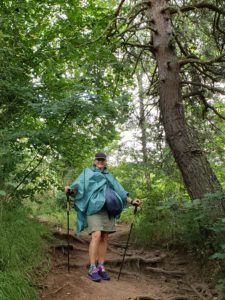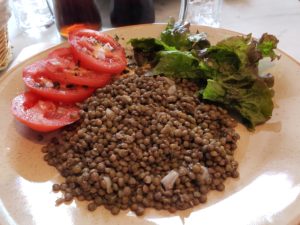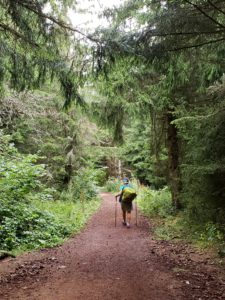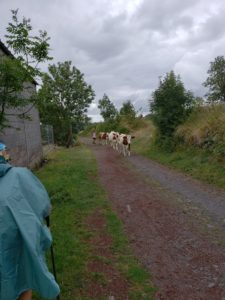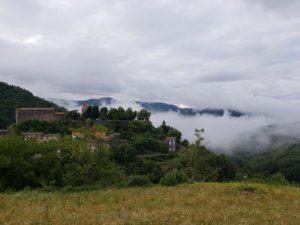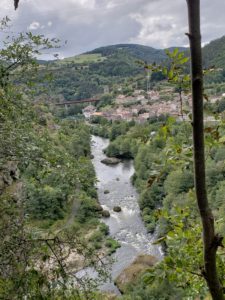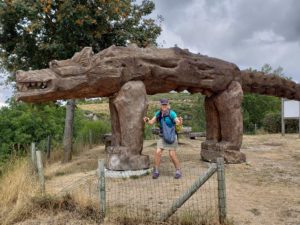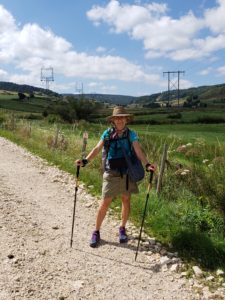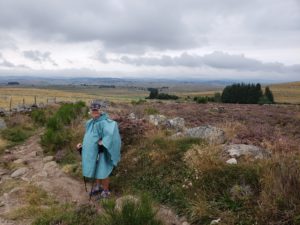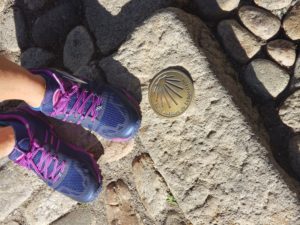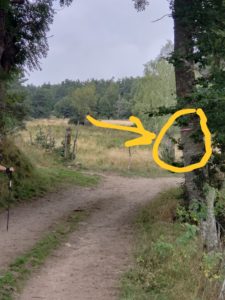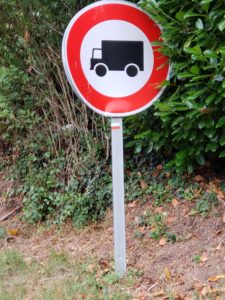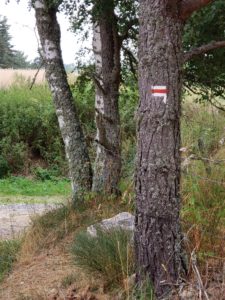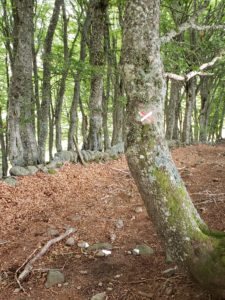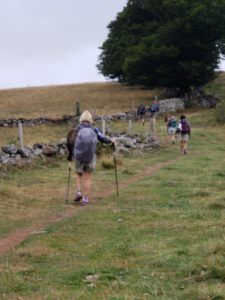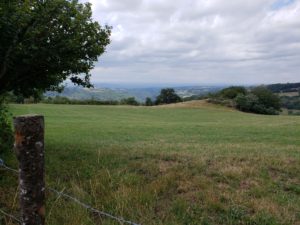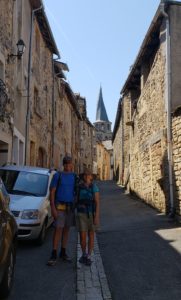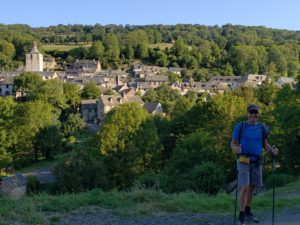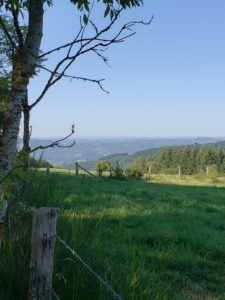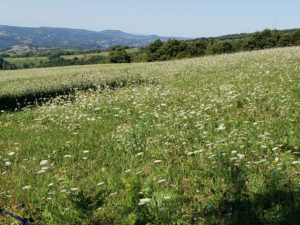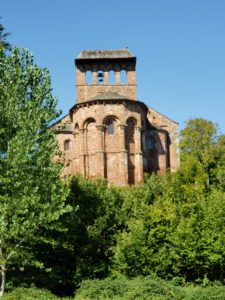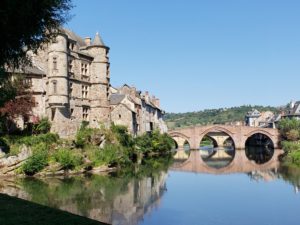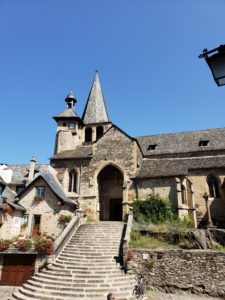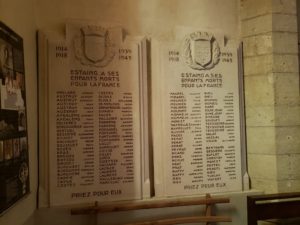Bonjour! Aujourd’hui est le quatrieme jour. Today was 13 miles, bringing the total to 57 miles.
Once again, this region of France is stunning! We’ll start with photos then go to the story. 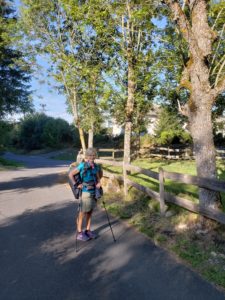

And of course, your classic French log cabin with grass growing on the roof and horses grazing in the front …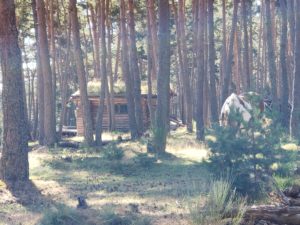
And then there’s this section of trail that really felt s lot like we were hiking in Yosemite.
Also, not a day goes by when we don’t see this French couple. They RUN every segment, every day. Today, they had a friend join them (the guy on the right, in the blue).
Now, back to the title: planning, pace and pain. This is now our third major walk (more than 30 days on the trail) and there are some things that we are a bit tuned into. You start with a plan: “I want to do this or that”, and “I’d like to do it in this many days”. Okay, you now have the beginnings of a plan.
To accomplish that, you need a “pace”, this many miles per day, on average, etc. But, each day probably requires a bit more fine tuning, like: We need to be there before dark and we have do many hours to hike… therefore a pace of ‘this’ is required.
Then there’s pain. No matter your plan, or your desired pace, pain will set your actual pace, and therefore, your plan. The first couple of days, you are excited and fresh and can take on the world! By day 3 or 4, the adrenaline is gone and the aches appear … this is the beginning of the toughest period. This is when you ask yourself, “what am I doing? ” This period passes, but not overnight. For us, it can last 5 – 7 or more days. It’s that … just hang in there period, where you keep saying “it’ll get better”.
The reality good news for us is that we now know that it always gets better … just wait. We’re in that valley now, but the beauty, great food, excellent learning and a spot of patience all helps to see us through.
God bless.
